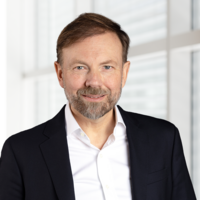In the majority of the countries where Oerlikon operates, public health systems are in place giving Oerlikon employees access to non-occupational medical and healthcare services.
At Oerlikon, we have been implementing a number of global and local initiatives to promote workers’ health. Examples of local initiatives are a healthy nutrition campaign in Remscheid, Germany, enabling the usage of foam rolls in Kelsterbach, Germany, and providing incentives to the health plan in the US when employees download a health app to help them track their own walking, weight and cholesterol levels and to remind them to stay healthy.
Globally, Oerlikon has been conducting our annual HSE Day every year since 2015. On this day, all sites globally have program, activities and trainings focused on promoting a specially-defined health, safety and/or environmental topic. Past themes included ergonomics, drive safe, health and wellbeing “fit4life”, which focused on physical activity, healthy eating, sleep, stress management and avoiding toxic substances. In 2020, the global HSE day could not take place as usual due to the COVID-19. The focus in 2020 was shifted to implementing measures that would prevent infection and to address related workers’ health topics such as mental well-being since the pandemic required employees to adapt to new working, socializing, educational and family situations and challenges.
A global health initiative launched in 2020 was free flu vaccinations. In past years, many of our sites have been offering employees the possibility to get seasonal flu vaccination. In 2020, we made this a worldwide initiative, within the limits of local legal laws.
All Oerlikon sites were to offer seasonal flu vaccination for their employees as flu vaccines have been shown to reduce the risk of flu illness, hospitalization and death. In the fall of 2020, we further emphasized the importance of getting a flu vaccine, not only to reduce employees’ risk from flu but also to help reduce the potential demand and strain on scarce health care resources due to the pandemic. In many of our legal entities, this was already the usual practice for years. With the global initiative, we wanted to ensure that all Oerlikon employees globally can benefit from getting a free vaccination shot against the flu, if they chose to do so. The flu vaccinations were voluntary.
